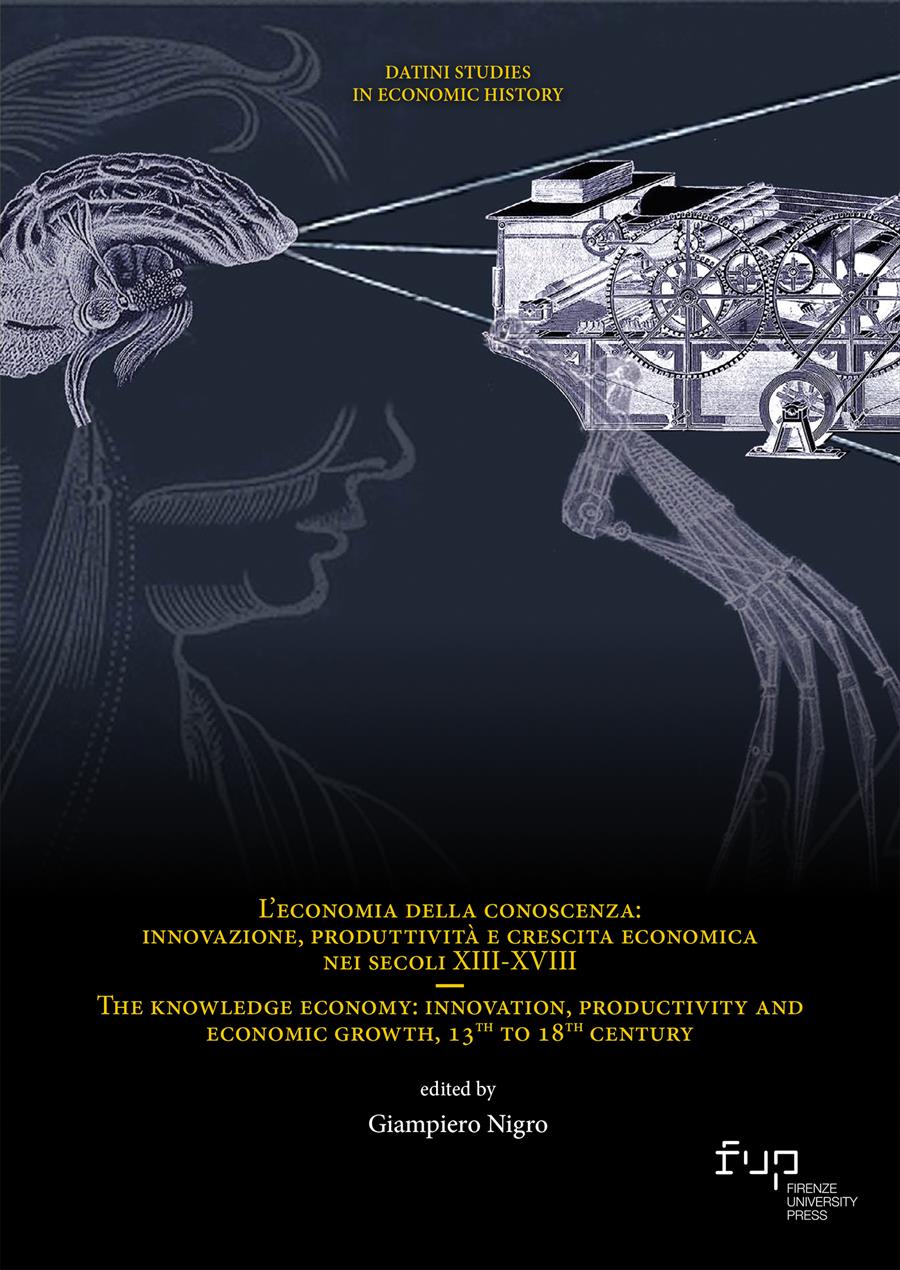Tally sticks as media of knowledge in the contexts of medieval economic and administrative histor
- Tanja Skambraks
- © 2023 Author(s) |
- CC BY 4.0
- DOI: 10.36253/979-12-215-0092-9.09
Tally sticks worked as ubiquitous stores of numerical knowledge and tools of accounting and administration in medieval Europe. Previous research emphasized both the potential and value of the wooden notched sticks not only for the social and economic history of the Middle Ages, but also for the history of writing, intellectual history. This article combines the analysis of archival objects and written sources from England and Germany analysing their various contexts of use. These involve the centralised, highly professional and ritualised tax accounting at the English Exchequer, husbandry and agriculture, consumer taxation as well as public credit and circulating money-substitutes. Furthermore tallies were often used as evidence in court and functioned alongside written administration.
- Keywords:
- tally sticks,
- book-keeping,
- material culture,
- numerical knowledge,
Universität Mannheim, Germany
- Berthet, Bernard. 1949. “Au sujet de la taille.” Annales. Economies. Sociétés. Civilisations, 4, 4: 431-34.
- Clanchy, Michael. 2013 (1979). From memory to written record. England 1066–1307. Oxford: Wiley-Blackwell.
- Desan, Christine. 2014. Making Money: Coin, currency, and the coming of capitalism. Oxford: Oxford University Press.
- Fielding, Kenneth J., ed. 1960. The speeches of Charles Dickens. Oxford: Clarendon Press.
- Forsberg, Per. 2018. “Technology as integrated into institutions: Expanding the list of actors affecting institutional conditions of cooperation.” International Journal o the Commons 12: 82-110.
- Gmür, Max. 1991 (1917). Schweizerische Bauernmarken und Holzurkunden. Bern: Stämpfli & Cie.
- Goody, Jack. 1977. The domestication of the savage mind. Cambridge: Cambridge University Press.
- Grandell, Axel. 1982. Karvstocken. En förbisedd kulturbärere. Ekenäs: Ekenäs tryckeri.
- Henkelman, Wouter F.M., and Margaretha L. Folmer, 2016. “Your tally is full! On wooden credit records in and after the Achaemenid Empire.” In Silver, money and credit: A Tribute to Robartus J. van der Spek on the occasion of his 65th birthday on 18th September 2014, ed. Kristin Kleber, and Reinhard Pirngruber, 133-44. Leiden: Nederlands Instituut voor het Nabije Oosten.
- Grandell, Axel. 1988. “Finds from Bryggen indicating business transactions.” The Bryggen Papers Suppl. Series, 2: 66-72.
- Hemardinquer, Jean-Jacques. 1963. “A propos d’une enquête sur la taille: tour d’horizon européen.” Annales. Economies. Sociétés. Civilisations, 18, 3: 141-48.
- Hyland, Sabine. 2017. “Writing with Twisted Cords.” Current Anthroplogy 85, 3: 412-19.
- Ifrah, Georges. 2010. Universalgeschichte der Zahlen. Berlin: Haffmans & Tolkemitt.
- Jenkinson, Hilary. 1911. “Exchequer tallies.” Archaeologia, 62: 367-80.
- Jenkinson, Hilary. 1924. “Medieval tallies, public and private.” Archaeologia, 74: 289-324.
- Johnson, Charles, ed. 1983. Dialogus de Scaccario/The course of the Exchequer and constitutio domus regis/The Royal Household. Oxford: Clarendon Press.
- Kovalev, Roman K. 2007.“Accounting, tag and credit tallies.” In Wood use in medieval Novgorod, ed. Mark A. Brisbane, 189-202. Oxford: Oxbow Books.
- Kovalev, Roman K., and Thomas S. Noonan. 2000. “What can archaeology tell us about how debts were documented and collcetd in Kievan Rus’?” Russian History/Histoire Russe, 27, 2: 119-54.
- Kuchenbuch, Ludolf. 1999. “Kerbhölzer in Alteuropa – Zwischen Dorfschmiede und Schatzamt.” In The Man of many devices in who wandered full many ways…Festschrift in honor of Jànos M. Bak, ed. Balázs Nagy, and Marcell Sebök, 303-25. Budapest: Central European University Press.
- Kuchenbuch, Ludolf. 2002. “Pragmatische Rechenhaftigkeit? Kerbhölzer in Bild, Gestalt und Schrift.” Frühmittelalterliche Studien, 36: 469-90.
- Schrift-Stücke. Informationsträger aus fünf Jahrtausenden. Eine Ausstellung der bayrischen Staatsbibliothek und des Bayrischen Hauptstaatsarchivs, München 19. Juli – 20. September 2000. Catalogue of the exhibition, München: Generaldirektion der Staatlichen Archive Bayerns ; Bayerische Staatsbibliothek,
- Menninger, Karl. 1992 (1969). Number words and number symbols. A cultural history of numbers. New York: Dover.
- Moore, Tony. 2013, “‘Score it upon my taille’: The use (and abuse) of tallies by the medieval Exchequer.” Reading Medieval Studies, 39: 1-24.
- Oschinsky, Dorothea, ed. 1971. Walter of Henley and other treatises on estate management and accounting. Oxford: Clarendon.
- Wedell, Moritz. 2001. Zählen. Semantische und praxeologische Studien zum numerischen Wissen im Mittelalter. Göttingen: Vandenhoeck und Ruprecht.
Chapter Information
Chapter Title
Tally sticks as media of knowledge in the contexts of medieval economic and administrative histor
Authors
Tanja Skambraks
Language
English
DOI
10.36253/979-12-215-0092-9.09
Peer Reviewed
Publication Year
2023
Copyright Information
© 2023 Author(s)
Content License
Metadata License
Bibliographic Information
Book Title
L’economia della conoscenza: innovazione, produttività e crescita economica nei secoli XIII-XVIII / The knowledge economy: innovation, productivity and economic growth, 13th to 18th century
Editors
Giampiero Nigro
Peer Reviewed
Number of Pages
456
Publication Year
2023
Copyright Information
© 2023 Author(s)
Content License
Metadata License
Publisher Name
Firenze University Press
DOI
10.36253/979-12-215-0092-9
ISBN Print
979-12-215-0091-2
eISBN (pdf)
979-12-215-0092-9
Series Title
Datini Studies in Economic History
Series ISSN
2975-1241
Series E-ISSN
2975-1195
